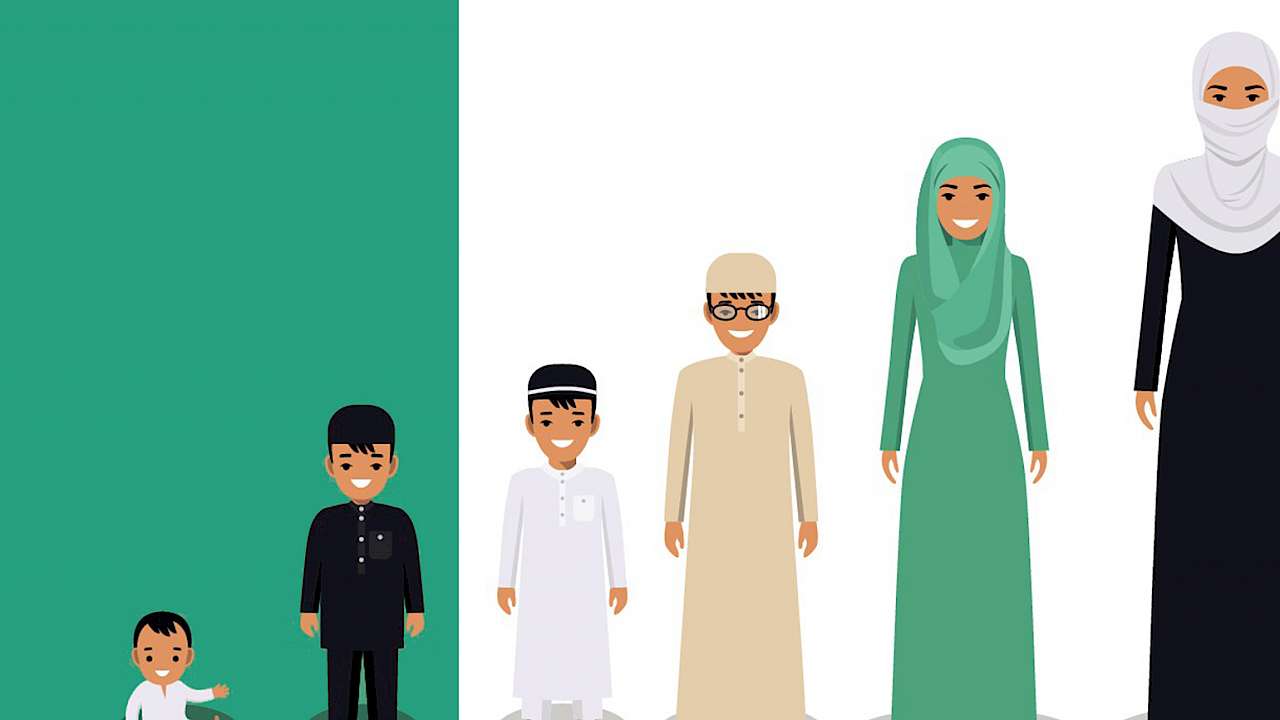My research, with colleagues at Cardiff University, concentrates on exactly that – mainstream practice in the transmission of Islam. We undertook research with 60 Muslim families in Cardiff – a diverse sample in terms of ethnicity, social class, and religious tradition.
We focused on how children learned to be Muslims in early and middle childhood – the oldest children in the study were aged 12 and the youngest aged four. We refer to the process of learning as ‘religious nurture’ as there are relationships involved – with family members, Muslim peers, and religious teachers
A child will usually be marked as a Muslim from the first moments of life, by having the adhan (call to prayer) spoken into her ear. She will also be given a name which marks her as Muslim. When she is growing up, the faith will very likely be made material in the fabric of the home.
This often starts at the front door with Arabic text on the lintel. Inside, framed verses from the Qur’an may be displayed, as well as pictures of famous mosques, usually in preference to family photographs. Other religious items could include prayer mats, copies of the Qur’an and an adhan clock to prompt five daily prayers.
In many family homes, there will be a frequent repetition of ritual and religious teachings. The age at which children learn ritual prayer (salat) varies, but even if the ritual is not strictly observed five times a day, it is a core aspect of the embodied learning of Islam. Salat is a physical enactment of submission to Allah (the meaning of the term ‘Islam’).
There is a subtle and embodied pedagogical process wherein children are gradually socialised into ways of thinking and doing. Behaviour is of central importance. Our youngest interviewees tended to describe what being a Muslim meant to them in terms of following a behavioural code.
Formal learning is an important part of a Muslim childhood. Almost all children learn to read the Qur’an in Arabic and most do this in classes at mosques, in teachers’ homes, or in their own homes. It is very common for these classes to be attended several times a week and a popular pattern is to attend each day Monday to Friday from 5 to 7 pm. A minority also attend Islamic Studies classes for children.
At home, there can be additional input from Islamic media such as TV channels and websites. The regimes of religious teaching in most UK Christian churches are relatively ‘light touch’ compared to those organised by mosques and Muslim families.
Belief in the literal truth of the Qur’an is mainstream, rather than being a fringe ideology
Belief in the literal truth of the Qur’an is mainstream, rather than being a fringe ideology. This truth is seen to be timeless and not to be reinterpreted for the 21st century. Parents do emphasise some aspects of Islam more than others and adapt religious practice to modern life, but they would be reluctant to admit any reinterpretation of the enduring Quranic truth.
There is some variation across schools of thought, but most Sunni parents we interviewed either did not know their specific Islamic tradition or were unwilling to see themselves as anything other than Sunni. There was little evidence of any mixing between Sunni and Shi’a families
Some of the youngest children in the study confused their religious identity with ethnic background. This is understandable since a great deal of children’s time is spent with other families from the same ethnic background as their parents.
There is some ideology of ‘apartism’ but for most, it is more likely that the company of other Muslims, and especially those from the same ethnic and linguistic background, is just more comfortable and more familiar. It also provides a guarantee (in theory) of a suitable moral framework for children.
Time spent with people from the same ethnic background is not straightforwardly a choice for Muslims. Employment patterns are certainly racialised, and this may also be true for the housing market. In practice, attendance at most mosques is dominated by a single ethnic group. This can reinforce the identification of religion with ethnicity. However, as they get older, there will be an expectation that children identify first and foremost as Muslim, before any national or ethnic identification.
Copyright Information
As part of CREST’s commitment to open access research, this text is available under a Creative Commons BY-NC-SA 4.0 licence. Please refer to our Copyright page for full details.






